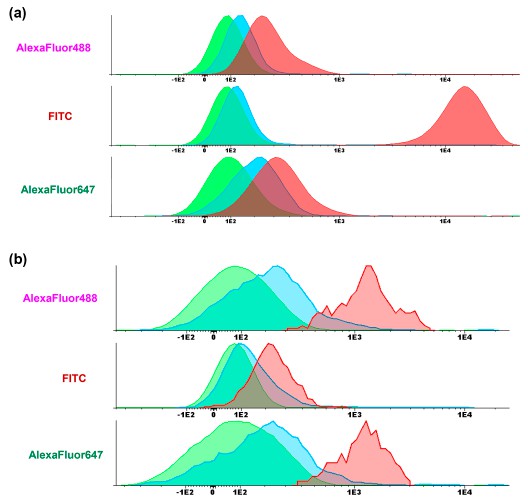Introduction of Isotype Controls
The isotype controls belong to the same class of immunoglobulins as specific antibodies. They are either not present in the cells under study, are antibodies produced by the antigenic reaction, or are myeloma-derived antibodies with unknown specificity, The ideal isotype control should not only "match" specific antibodies on the heavy chain (IgA, IgG, IgD, IgE, or IgM), subclass, and light chain (kappa, lambda) class, but also the quantity and type of fluorescent molecules in each immunoglobulin. Antibody isotypes can be unevenly distributed in a developing primary reaction germinal center (GC) as an indication of variability. Using isotype-specific secondary antibodies, IgA, IgG, and IgM binding can be distinguished.
Immunoglobulin A (IgA) of Microbiome Ab
The normal flora in the gut flora, or symbiotic flora, can also stimulate IgA production and can be coated by IgA. Symbiotically induced IgA is thought to have lower affinity and specificity than pathogen-induced IgA. Secreting IgA (SIgA) provides critical protection against pathogens and toxins, but can also directly bind to and "wrap" symbiotic bacteria in the gut. Although IgA is the main antibody isotype produced on mucosal surfaces, it interacts with only a small fraction of the gut microbiome. Symbiotic targeting of SIgA forms gut microbiome composition, regulates bacterial behavior, and enhances host-microbiome homeostasis in mice and humans. Immunoglobulin A (IgA) is the most abundant isotype antibody produced on the surfaces of mucosal, with nearly 2 grams of IgA secreted into the gut every day, forming the composition of the gut microbiome through currently unknown mechanisms.
 Fig.1 Cytokine assay.1
Fig.1 Cytokine assay.1
Related Anti-Microbiome Antibody Products
If you are interested in our anti-microbiome Ab isotype controls products, please contact us for more details.
Reference
- Okuyama, Mai, et al. "Elevated soluble PD-L1 in pregnant women's serum suppresses the immune reaction." Frontiers in Immunology 10 (2019): 86. Distributed under Open Access license CC By 4.0, without modification.